¿Por qué pican las pulgas a algunas personas y no a otras? ¡Descubre el secreto detrás de su comportamiento!
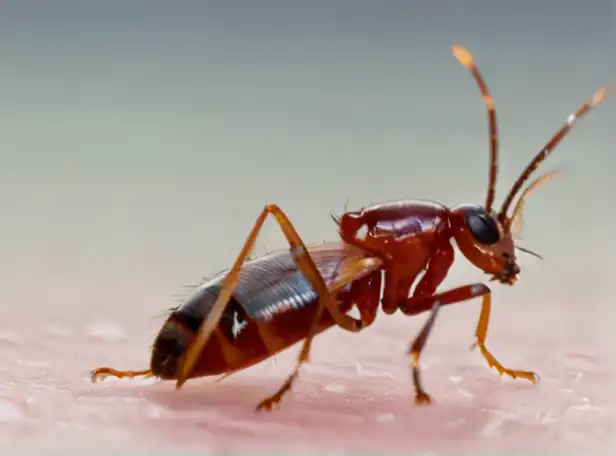
- La biología y el comportamiento de las pulgas
- La diferencia entre las especies de pulgas que pican y las que no
- Los factores que influyen en la picadura de las pulgas
- ¿Por qué algunas personas son más atractivas para las pulgas?
- Cómo evitar las picaduras de pulga
- ¿Por qué las pulgas pican en ciertas partes del cuerpo?
- Preguntas frecuentes
La biología y el comportamiento de las pulgas
La anatomía especializada de las pulgas
Las pulgas poseen un cuerpo alargado y flexible, perfectamente adaptado para su estilo de vida parasitario. Sus patas delanteras son especialmente desarrolladas para permitirles trepar y saltar con facilidad, lo que les permite acceder a sus huéspedes humanos o animales.
La percepción de la temperatura
Las pulgas tienen una capacidad única para detectar la temperatura corporal de su huésped. Gracias a un órgano llamado "antena termoperceptora", pueden sentir la calidez del cuerpo y moverse hacia ella en busca de calor y alimentos.
La búsqueda de alimento
Las pulgas son hematófagas, lo que significa que necesitan sangre para sobrevivir. Utilizan su probóscide, un tubo flexible y sensorial, para encontrar las venas más accesibles y extraer la sangre de su huésped.
La importancia del olfato
Las pulgas también dependen del sentido del olfato para encontrar a sus huéspedes. Pueden detectar los vapores corporales emitidos por la piel, lo que les permite localizar y seguir a sus presas.
El papel de las feromonas
Las feromonas son sustancias químicas producidas por los pulgos machos para atraer a las hembras. Estas feromonas también pueden influir en el comportamiento de las hembras, dirigiéndolas hacia ciertos huéspedes o entornos.
La importancia del hábitat
Las pulgas prefieren vivir en lugares con alta concentración de calor y humedad, como la zona genital o la parte superior del tronco. Esto les permite mantenerse cerca de su fuente de alimento y evitar la exposición a riesgos externos.
La interacción con los huéspedes
Las pulgas han evolucionado para adaptarse a las conductas y hábitos de sus huéspedes humanos o animales. Pueden influir en el comportamiento de estos últimos, modificando su actividad física o alterando su sistema inmunológico.
La complejidad del comportamiento
El comportamiento de las pulgas es mucho más complejo de lo que se podría imaginar. Estas pequeñas criaturas pueden adaptarse a diferentes entornos y huéspedes, demostrando una gran plasticidad y capacidad para sobrevivir en diversas condiciones.
La lucha evolutiva
Las pulgas han desarrollado estrategias para sobrevivir y reproducirse en un ambiente en constante competencia. Esta lucha evolutiva ha llevado a la selección de ciertas características y habilidades que les permiten prosperar en su nicho ecológico.
La fascinación por el comportamiento
El estudio del comportamiento de las pulgas es fascinante, ya que nos permite comprender mejor cómo estas pequeñas criaturas interactúan con su entorno y adaptan sus estrategias para sobrevivir. Al analizar su biología y comportamiento, podemos encontrar respuestas a preguntas como ¿por qué pican algunas personas y no otras?
La diferencia entre las especies de pulgas que pican y las que no
Las especies hematófagas
Some species of fleas, such as the cat flea (Ctenocephalides felis) and the dog flea (Echidophaga siamensis), are obligate blood-feeders, meaning they need blood to survive. These species have evolved to feed on the blood of their hosts, making them more likely to bite.
Las especies ectoparasitarias
On the other hand, some species of fleas, such as the rabbit flea (Diamphillina spp.), are ectoparasites that live on the skin or fur of their hosts. These species feed on skin secretions, sweat, and other substances, but do not require blood to survive.
La importancia del estilo de vida
The difference in feeding behavior between these two types of fleas is closely tied to their lifestyle and ecology. Hematophagous fleas have evolved to live in close association with their hosts, whereas ectoparasitic fleas may be more generalist in their habits.
Las adaptaciones evolutivas
Over time, hematophagous fleas have developed specific adaptations that allow them to access blood vessels and feed on the blood of their hosts. For example, some species have evolved specialized mouthparts or salivary glands that help them to penetrate skin and ingest blood.
La variedad entre especies
Despite their similarities in appearance and behavior, different species of fleas exhibit distinct differences in their feeding habits. Some species may be more prone to biting than others, while some may be more likely to feed on skin secretions or other substances.
El papel del hábitat y la dieta
The environment and diet of a flea population can also influence its behavior and feeding habits. For example, fleas that live in environments with high humidity and temperature may be more likely to feed on blood than those living in drier conditions.
La importancia de la investigación
Understanding the differences between hematophagous and ectoparasitic fleas can provide valuable insights into their behavior and ecology. This knowledge can help us better manage flea populations and reduce the risk of infestations.
Los factores que influyen en la picadura de las pulgas
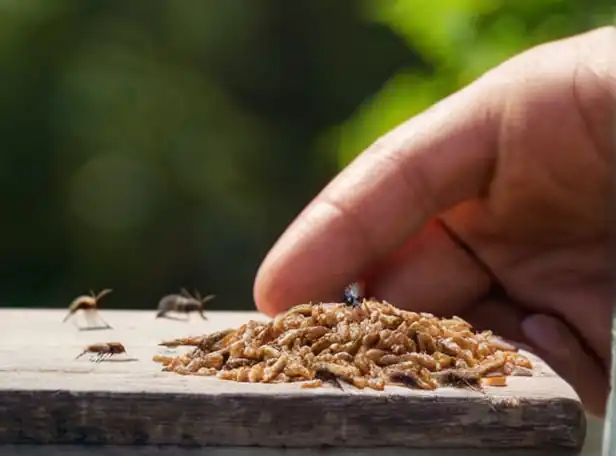
La temperatura y el calor
Fleas are attracted to warmth and heat, which is why they're more likely to bite people who emit a higher body temperature. This means that individuals with higher metabolic rates or those who tend to be warmer due to their environment may be more prone to flea bites.
El olfato y la química
Fleas use their sense of smell to detect potential hosts, and they're attracted to certain chemical cues emitted by humans. People with a stronger body odor or certain types of skin secretions may be more appealing to fleas.
La higiene personal
Maintaining good hygiene can help reduce the risk of flea bites. Fleas are less likely to target individuals who wash their clothes and bedding regularly, as they're less likely to find food sources on these clean surfaces.
El estilo de vida y el comportamiento
Fleas are more likely to bite people who engage in activities that bring them into close proximity with other animals or the outdoors. For example, dog owners or hikers may be more prone to flea bites due to their exposure to fleas and other parasites.
La salud general
Individuals with compromised immune systems or certain health conditions may be more susceptible to flea bites. Fleas can detect subtle changes in a host's physiology and behavior, making them more likely to target individuals who are already vulnerable.
El tipo de piel y el cabello
Fleas prefer to feed on hosts with thicker, coarser hair or skin that is easier for them to penetrate. This means that people with curly or coarse hair may be more prone to flea bites than those with smoother skin.
La exposición a los animales infestados
People who are frequently exposed to animals that carry fleas, such as dogs or cats, may be more likely to get bitten themselves. Fleas can jump long distances and quickly infect new hosts.
La calidad del ambiente
The environment in which an individual spends most of their time can also influence the likelihood of flea bites. Fleas thrive in areas with high humidity, warmth, and poor sanitation, making these conditions conducive to infestation.
El papel de los factores genéticos
Research suggests that there may be a genetic component to why some people are more prone to flea bites than others. Certain genetic markers or variations could influence an individual's susceptibility to flea infestations.
¿Por qué algunas personas son más atractivas para las pulgas?
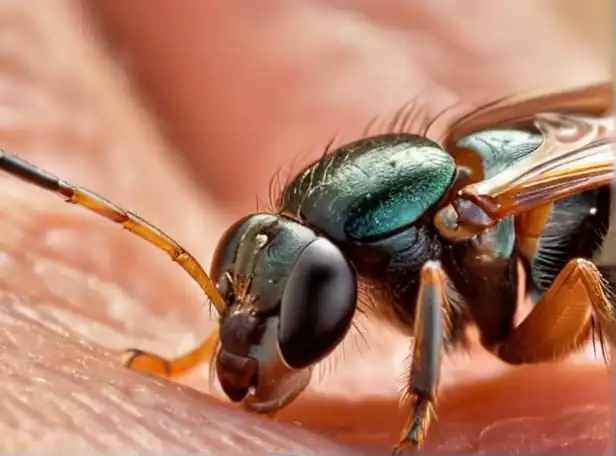
La densidad de la piel
People with thicker, more dense skin may be more appealing to fleas due to the ease of penetration. This is especially true for individuals with curly or coarse hair that can provide a comfortable habitat for fleas.
El pH del cabello y la piel
Fleas prefer environments with a slightly acidic pH, which is found in some people's skin and hair. Those with an acidic body chemistry may be more likely to attract fleas due to this unique environment.
La presencia de grasas corporales
Fleas are attracted to the fatty secretions of human skin, particularly around areas like the nape of the neck, armpits, or groin. Individuals with higher levels of sebum production in these areas may be more prone to flea bites.
El ritmo cardíaco y la circulación sanguínea
Fleas are drawn to the warmth and movement generated by a host's circulation. People with faster heart rates or increased blood flow may be more attractive to fleas due to this unique energy signature.
La higiene personal y el estilo de vida
Individuals who engage in activities that bring them into close proximity with other animals, like dog owners or frequent hikers, may be more prone to flea bites. Poor hygiene practices can also increase the likelihood of infestation.
La cantidad y calidad del sudor
Fleas thrive in warm, humid environments, making individuals who tend to sweat more or have a higher body temperature more appealing. Additionally, people with certain types of skin secretions may be more attractive to fleas due to their unique chemical composition.
El papel de los microorganismos y la flora bacteriana
Fleas can detect the presence of certain bacteria on human skin, which may influence their feeding behavior. Individuals with altered skin microbiomes or higher levels of certain bacterial species may be more susceptible to flea bites.
La influencia de factores psicológicos
Research suggests that fleas may also respond to psychological cues, such as stress or anxiety, from their hosts. People who are experiencing high levels of stress or have a weakened immune system may be more prone to flea bites due to these emotional and physiological changes.
These factors can combine in complex ways to make some individuals more attractive to fleas than others. By understanding the underlying reasons for this phenomenon, we can better address the issue of flea infestations.
Cómo evitar las picaduras de pulga
Mantén una buena higiene personal
Regularly washing your clothes, bedding, and towels in hot water can help eliminate fleas from your environment. Additionally, showering or bathing regularly can reduce the likelihood of flea bites.
Usa productos anti-pulgas
Using over-the-counter or prescription medications that target fleas can be an effective way to prevent infestations. Consult with a healthcare professional before using any products to ensure safe and effective use.
Evita contacto con áreas infestadas
Avoiding contact with areas where fleas are known to thrive, such as grassy fields or pet habitats, can reduce the risk of exposure.
Usa repelentes naturales
Certain essential oils, like citronella or lemongrass, have natural flea-repelling properties. Applying these oils to your skin or clothing may help deter fleas.
Cambia tus hábitos de baño
Fleas are attracted to the warmth and moisture of human bodies. Taking frequent cool showers or baths can help reduce the attractiveness of your body to fleas.
Usa telas anti-pulgas en ropa y accesorios
Wearing clothing and using accessories with built-in flea-repellent properties, such as permethrin-treated fabrics, can provide an additional layer of protection against flea bites.
Mantén un entorno limpio y ordenado
Regularly vacuuming and dusting surfaces, especially areas where pets frequent, can help eliminate fleas and their eggs from your environment.
Evita compartir ropa o accesorios con personas infectadas
Avoiding sharing clothing or accessories with individuals who have been exposed to fleas can reduce the risk of transmission.
Consulte con un profesional de la salud
If you're experiencing persistent flea bites or infestations, consult with a healthcare professional for guidance on how to prevent and treat these issues. They may recommend specific products, treatments, or lifestyle changes tailored to your needs.
Cuida tus mascotas
Fleas often target pets, so ensuring your furry friends are well-groomed, vaccinated, and treated regularly can help reduce the risk of flea bites and infestations.
¿Por qué las pulgas pican en ciertas partes del cuerpo?
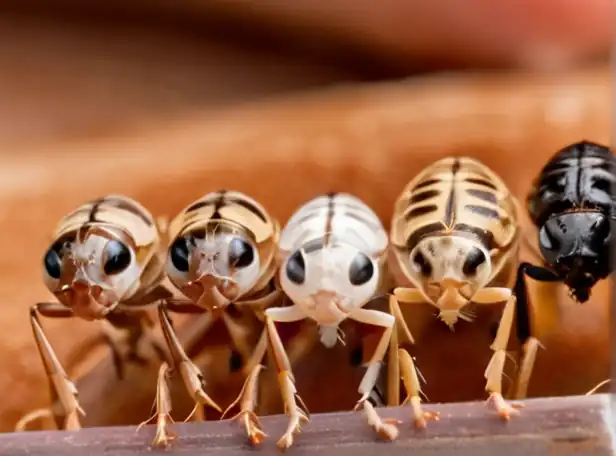
La nariz y las orejas: Fleas are attracted to the warmth and moisture of the nasal passages and ear canals, making these areas prime targets for bites.
El cuello y la garganta: The neck and throat area is also a common spot for fleas to bite, likely due to the proximity to the blood vessels and warm skin.
Las piernas y los brazos: Fleas often target the lower extremities, such as the legs and arms, possibly because these areas are more prone to sweating and warmth.
El torso y el pecho: The chest area is another common spot for fleas to bite, potentially due to its proximity to the armpits and the presence of sweat glands.
La parte posterior del cuello: The nape of the neck is a favorite spot for some fleas, possibly because it's an area with loose skin that's easy to pierce.
Las rodillas y las muñecas: Fleas may target these joints due to their proximity to the blood vessels and the fact that they're often exposed to warmth from the body.
El área alrededor de los ojos: While fleas don't typically bite around the eyes themselves, they may target the surrounding skin, possibly because it's a warm and moist area.
La parte superior del hombro: Some people report flea bites on the top of their shoulders, which could be due to the presence of sweat glands or the proximity to the neck.
These areas are not exhaustive, but fleas tend to prefer warmer, more humid spots where they can feed easily. Remember that individual preferences may vary!
Preguntas frecuentes
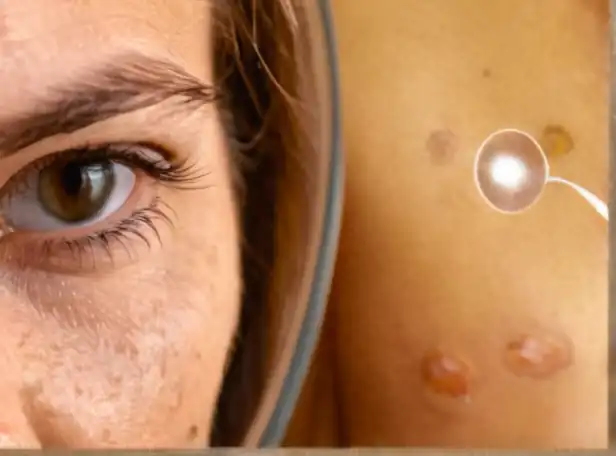
¿Por qué algunas personas tienen más pulgas que otras?
La respuesta es simple: las pulgas se atraen por la cantidad y calidad de la comida disponible. Gente que vive en áreas con alta densidad de pulgas o tiene perros o gatos infectados tiene mayor probabilidad de atrapar pulgas.
¿Por qué no puedo ver las pulgas en mi cuerpo?
Pulgas son pequeñas y difíciles de detectar a simple vista. Además, pueden estar ocultos bajo la piel o en áreas con poco vello. No te preocupes si no puedes verlas; es común que se sientan pero no sean visibles.
¿Cómo puedo prevenir las picaduras de pulgas?
Prevenir las picaduras es relativamente fácil. Mantén tu vivienda limpia y desinfectada, especialmente en áreas donde viven animales. Lava tus ropas y ropa interior con frecuencia, y evita dejar ropa sucia en el piso.
¿Es posible que las pulgas me transmitan enfermedades?
Sí, las pulgas pueden ser vectores de algunas enfermedades graves como la piroplasmose, una enfermedad causada por protozoos. Sin embargo, es importante mencionar que estas enfermedades son relativamente raras en humanos.
¿Cómo puedo curar las picaduras de pulgas?
Las picaduras de pulgas generalmente no requieren tratamiento médico. Sin embargo, puedes aliviar el dolor y la inflamación aplicando crema de aloe vera o un antiinflamatorio tópico. Asegúrate de evitar rascarte o rasgar la piel, ya que puede provocar infecciones.
¿Por qué algunas personas pueden tolerar mejor las picaduras de pulgas?
La capacidad para tolerar las picaduras de pulgas depende en gran medida de la individualidad. Algunas personas pueden desarrollar una sensibilidad a los productos químicos presentes en el suero de las pulgas, lo que puede hacer que les duela más.
¿Cómo puedo saber si tengo pulgas?
Si sientes picazón o comezón en tu piel, especialmente después de estar en contacto con animales infectados, es posible que tengas pulgas. Puedes también buscar signos visibles como hinchazones o manchas en la piel.
¿Es seguro usar productos para repeler pulgas?
Sí, los productos para repeler pulgas son seguras y efectivos cuando se utilizan según instrucciones. Asegúrate de leer las etiquetas y seguir las recomendaciones para evitar cualquier reacción adversa.
Deja una respuesta
Entradas relacionadas